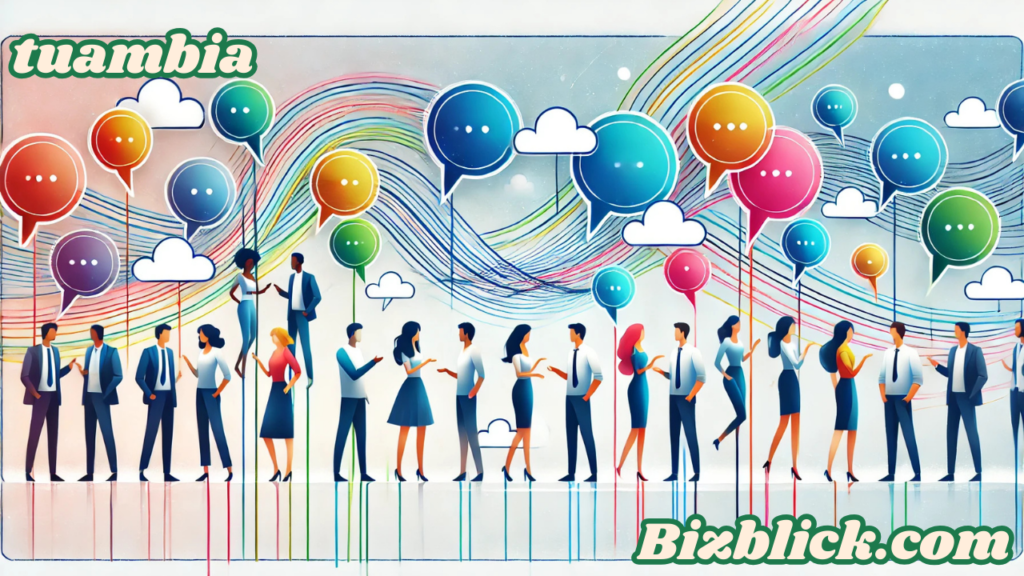Short Title: Tuambia?? – Exploring Its Meaning and Significance
Tuambia is a term that has gained attention across various contexts, but what exactly does it mean? Its usage and significance might vary, but exploring its implications provides a clearer understanding. This article dives deep into the concept of tuambia, its relevance, and why it matters.
What Is Tuambia?
Tuambia can be interpreted in multiple ways depending on the context. In some cases, it symbolizes communication or sharing of ideas, while in others, it might represent a unique identifier or a coded term in specific fields. At its core, tuambia invites discussion and interpretation, making it an intriguing subject.
Its etymology and origins might trace back to cultural or linguistic roots, possibly implying a dialogue or exchange. This makes tuambia a term rich in potential meanings, relevant across different domains.
The Linguistic Roots of Tuambia
From a linguistic perspective, tuambia might derive from phrases or languages that emphasize communication. For instance, in certain African languages, similar terms convey “tell us” or “speak to us.” This suggests that tuambia inherently carries a sense of dialogue, openness, or storytelling.
Language evolves, and terms like tuambia often adapt based on usage. Today, it might serve as a metaphor for transparency or community-driven discussions, offering a glimpse into its broad applications.
The Cultural Significance of Tuambia
Tuambia might hold cultural importance, depending on the region or group using it. For some, it symbolizes empowerment, giving individuals or communities a voice to express themselves. Others may view it as a tool for collective problem-solving, where ideas are shared and refined.
This cultural lens highlights the diverse ways tuambia could be utilized. Whether in storytelling, debates, or initiatives promoting unity, it represents a bridge connecting people through communication.
Tuambia in Modern Contexts
In the digital age, tuambia may also be interpreted as a concept aligning with online interaction and collaboration. Social media platforms, forums, and content-sharing websites embody the essence of tuambia by facilitating dialogue.
Modern contexts could redefine tuambia to mean more than just speaking or sharing—it might imply creating spaces where individuals can freely exchange thoughts and ideas without fear of judgment.
Why Tuambia Matters??
Tuambia is not just a word or a phrase; it is an idea with far-reaching implications. It emphasizes the value of open communication, where individuals and communities feel heard and valued.
In today’s fast-paced world, concepts like tuambia encourage people to slow down and engage in meaningful exchanges. Whether in personal relationships, workplaces, or societal frameworks, the principles tied to tuambia foster collaboration and understanding.
Potential Applications of Tuambia
- Community Building: Tuambia can inspire community-driven projects where people unite to address shared concerns.
- Educational Environments: It can serve as a foundation for open discussions, promoting inclusive learning.
- Creative Expression: Artists and writers may use tuambia as a motif to convey stories that resonate with audiences.
- Conflict Resolution: In mediation or counseling, tuambia might symbolize finding common ground through honest dialogue.
Challenges Associated with Tuambia
Despite its positive aspects, applying the concept of tuambia may face hurdles. Miscommunication or misunderstandings could arise if parties involved lack clarity or trust. Cultural differences might also pose challenges, as the interpretation of tuambia could vary widely.
Addressing these challenges requires patience, adaptability, and a willingness to engage with different perspectives. Only then can tuambia fulfill its potential as a unifying concept.
FAQs About Tuambia
Q: Is tuambia a universal term?
A: Tuambia’s interpretation may differ across languages and cultures, but its core idea of communication and sharing remains universally relevant.
Q: How can tuambia be applied in daily life?
A: Tuambia can guide interpersonal communication, inspire collaborative efforts, or encourage meaningful discussions within communities.
Q: Does tuambia have a specific origin?
A: While its exact origin is unclear, tuambia may stem from linguistic roots emphasizing dialogue or storytelling.
Q: Can tuambia be used in professional settings?
A: Absolutely. Tuambia can foster open communication, team collaboration, and conflict resolution in workplaces.
Q: What makes tuambia significant today??
A: In an increasingly connected world, tuambia embodies the essence of transparency and meaningful interaction, making it highly relevant.
Conclusion: The Essence of Tuambia??
Tuambia stands as a symbol of communication, unity, and collaboration. Whether viewed through linguistic, cultural, or modern lenses, it carries a profound significance. By embracing the principles of tuambia, individuals and communities can foster open dialogue and build stronger connections.
In a world where understanding is often the key to progress, tuambia serves as a reminder of the power of words and the value of sharing ideas.
